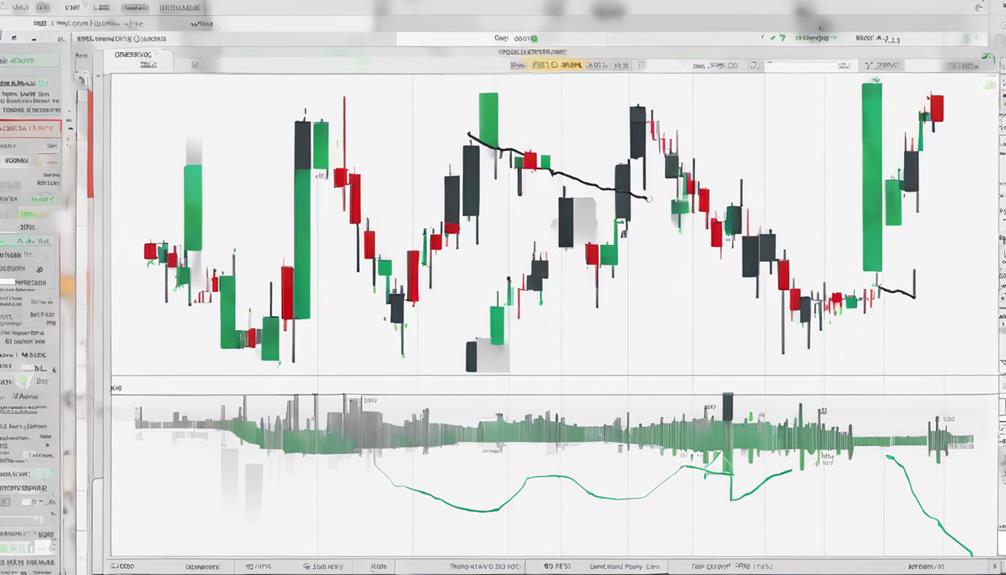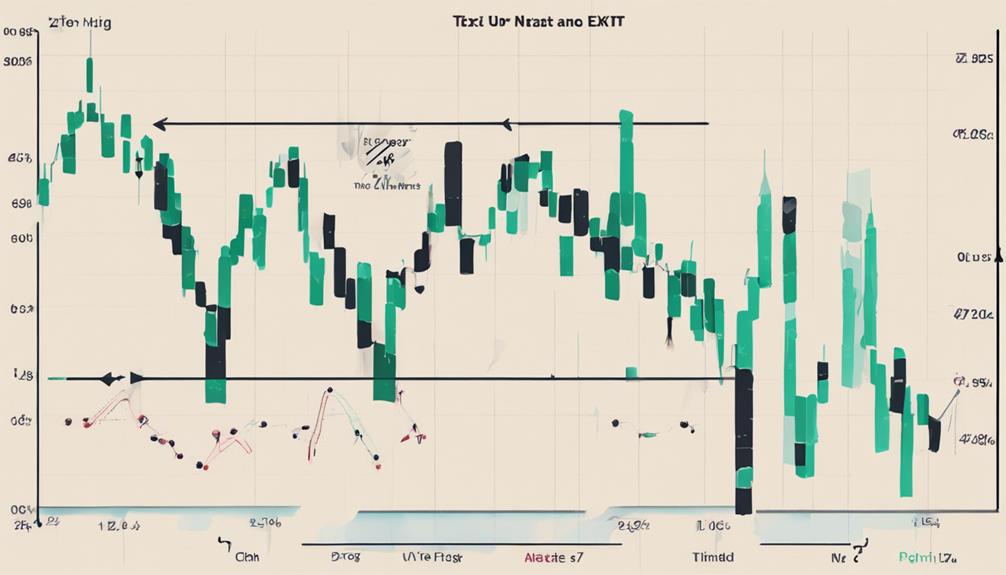Understanding the Zig Zag Indicator can provide valuable insights for traders seeking to enhance their technical analysis toolkit.
By breaking down the navigation process into three simple steps, individuals can effectively identify potential trend reversals and confirm trend directions.
These steps offer a structured approach to utilizing the indicator's capabilities in making informed trading decisions.
As traders delve into the intricacies of each step, they can unlock the full potential of the Zig Zag Indicator and gain a competitive edge in the dynamic world of trading.
Understanding the Zig Zag Indicator
The Zig Zag Indicator is a technical analysis tool that effectively filters out market noise to reveal significant price reversals. This indicator works by plotting points on a chart based on a set percentage price movement. It helps traders identify swings in price, marking both highs and lows.
The Zig Zag lines connect these significant points, providing a visual representation of the trend. By adjusting the percentage price movement, users can adapt the indicator to different stocks or market conditions. This flexibility is crucial as it allows traders to fine-tune the indicator's sensitivity to match the volatility of the asset being analyzed.
The Zig Zag indicator is commonly used in conjunction with Elliott Wave Theory to enhance technical analysis, providing a clearer picture of potential trend changes and key support/resistance levels in the market. Understanding how to interpret the Zig Zag Indicator is essential for traders looking to navigate price movements effectively.
Applying the Zig Zag Indicator

Utilizing the Zig Zag Indicator efficiently requires a clear understanding of its parameters and strategic application in technical analysis. This tool is valuable for identifying price reversals and trends, helping traders eliminate random fluctuations in the market to reveal underlying price movements.
By adjusting parameters such as the percentage price movement, users can customize the indicator to suit their trading preferences. The Zig Zag indicator is often used in conjunction with Elliot Wave Theory to pinpoint support and resistance zones, aiding in making informed trading decisions.
It functions as a retrospective tool, analyzing historical data to identify potential trend changes and assist traders in predicting market movements. By utilizing the Zig Zag indicator effectively, traders can gain insights into market trends and make informed decisions based on historical price data and pattern recognition.
Maximizing Zig Zag Indicator Benefits

When optimizing the benefits of the Zig Zag indicator, adjusting its percentage settings according to market conditions and timeframes is crucial for precise trend identification. By customizing these settings based on the level of market volatility, traders can effectively predict future trends and pinpoint price reversal areas with accuracy.
The Zig Zag indicator plays a significant role in identifying major uptrends and downtrends, facilitating trend analysis and decision-making processes. To enhance trend identification further, it is advisable to combine the Zig Zag indicator with other technical analysis tools and indicators for a comprehensive market outlook.
Moreover, traders can utilize the Zig Zag indicator in range trading strategies to navigate price channels efficiently and execute trades within these boundaries with precision. By leveraging the optimal trend identification capabilities of the Zig Zag indicator and integrating it with complementary indicators, traders can make informed decisions and enhance their overall trading strategies.
Can I Use the Zig Zag Indicator for Technical Analysis with Just 3 Simple Steps?
Yes, you can use the simplified zig zag indicator tutorial for technical analysis with just 3 simple steps. First, apply the zig zag indicator to your chart. Next, identify the swing highs and swing lows. Finally, use these points to analyze the market trend and make informed trading decisions.
Frequently Asked Questions
How Do You Use a Zigzag Indicator?
To use a Zig Zag indicator effectively, traders observe price reversals and filter out market noise. By adjusting the percentage parameter, one can tailor the indicator to different securities and market conditions. This tool aids in identifying support and resistance levels, assisting in strategic trading decisions.
What Is the Zigzag Line Strategy?
The Zigzag Line Strategy is a technical analysis approach that leverages the Zig Zag indicator to identify trend reversals. By plotting key points on a chart, it filters out market noise and helps traders pinpoint potential support and resistance levels, enhancing trading decisions.
How Do You Use a Zigzag Line?
Utilize the Zigzag line as a tool to identify swing highs and lows, aiding in trend reversal detection and noise filtration in price movements. This analytical method assists traders in pinpointing support/resistance levels and visualizing potential price patterns.
What Is the Best Value for the Zigzag Indicator?
The best value for the Zig Zag indicator, typically ranging between 5% to 10% price movement, depends on traders' preference for sensitivity to price fluctuations. Experimenting with different percentage values is crucial for optimizing settings based on volatility and price action.
Conclusion
In conclusion, the Zig Zag Indicator is a valuable tool for traders to confirm trend directions and identify potential trend reversals.
By following the three simple steps of choosing a starting point, defining the percentage price movement, and connecting swing highs or lows, traders can effectively navigate the indicator.
For example, a trader using the Zig Zag Indicator correctly identified a trend reversal by connecting multiple swing points, leading to a profitable trade decision.
